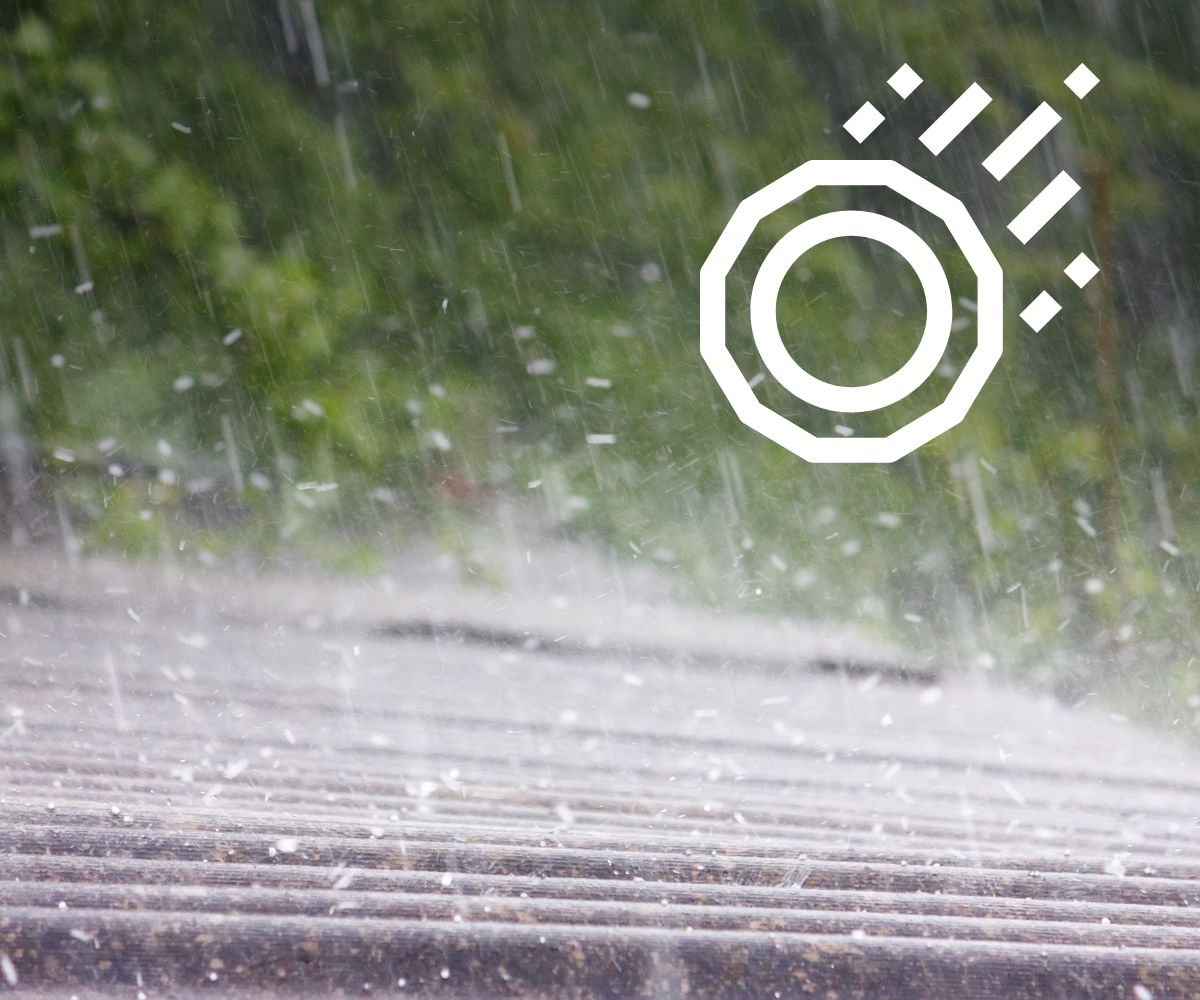As homeowners seek to protect their most valuable asset—their homes—they are often confronted with the intricate and volatile landscape of homeowner insurance. It’s a world where economic fluctuations, legislative changes, and the capriciousness of nature can all conspire to influence insurance affordability. This article aims to equip you with the insights and tools necessary to navigate the complexities of the insurance market. You’ll learn how technological advancements are reshaping the way we secure discounts and streamline the insurance-buying process. By understanding the intricacies of risk assessment and embracing the digital era’s innovations, homeowners like you can unlock the secrets of acquiring affordable, yet comprehensive homeowner insurance.
Unraveling the Strings: How Insurance Markets Control Your Homeowner’s Coverage Costs
You don’t need a crystal ball to foresee the ebb and flow of insurance premiums; you just need a firm grasp on market dynamics. The trick is, homeowner insurance is as much about risk as it is about real estate. Insurers are in the business of betting against the odds of your home suffering damage, and their stakes are set by a vast insurance marketplace. This is an intricate ballet of risk assessment and economic trends, so let’s cut through the jargon and decode how this impacts your wallet.
First things first, climate plays the conductor in this orchestra. With catastrophic events now more frequent guests at our doorsteps, insurance companies are recalibrating the risk of insuring homes, especially in disaster-prone areas. Herein lies a basic truth: higher risk equals higher premiums. If Mother Nature has been less than kind to your region, expect that to be reflected in your insurance costs.
Next up, let’s talk building costs. If reconstruction prices soar – thanks to an uptick in labor or material costs – insurers adjust premiums to match. After all, if your house needs a rebuild, they’re footing the bill, so they want to ensure they’re collecting enough now to cover potential future expenses.
The insurance world is also a big fan of credit scores. A robust credit history can signal to insurers that you’re a safe bet and thereby lower your premiums. On the flip side, if your credit score has taken a few hits, brace yourself for higher rates. It’s all about predictability, and a solid credit score paints a picture of reliability. There are only eight states that impose stringent restrictions on the application of credit in auto or homeowners policies include California, Hawaii, Maryland, Massachusetts, Michigan, Nevada, Oregon, and Utah.
Remember, competition is the spice of life – and business. In areas with more insurance providers vying for your business, you might find better rates as companies slash premiums to capture more customers. It’s Economics 101: competition can drive prices down, as insurers pull all stops to win over homeowners.
Lastly, regulations and local laws can act as a dam, controlling the flow of insurance costs. Some states have tighter laws on how much insurers can hike up premiums, acting as a buffer against shock-inducing rate increases.
So, the takeaway? Become savvy about these market forces. Understanding the insurance landscape can empower you to ask the right questions, negotiate better deals, and ultimately, dive into that ever-changing pool of homeowner insurance with confidence. Be proactive, stay informed, and keep your ear to the ground – your financial health depends on it.
Leveraging Technology to Slash Homeowner Insurance Expenses
In today’s savvy homeowner’s quest to trim down expenses, the power of technology can’t be overstated – particularly when it comes to insurance. Aligning cutting-edge tech with inventive strategies has unequivocally transformed the landscape of homeowner insurance, spawning win-win outcomes for both providers and customers alike. Let’s delve into the often-overlooked sphere where silicon meets savings.
First off, the advent of smart home systems marks a revolution in risk mitigation. Insurers are dishing out discounts for homes equipped with IoT (Internet of Things) devices. Think about it – smart smoke detectors, water sensors, and burglar alarms aren’t just fancy gadgets; they’re your frontline defense against disasters that could result in hefty claims. By detecting issues early or preventing them altogether, these nifty devices slash risks significantly, compelling insurers to loosen their grip on your wallet.
Then, there are telematics, a boon for monitoring and improving home maintenance but mainly used in auto insurance. Imagine harnessing data to flag potential problems before they balloon into insurance nightmares. Insurers reward such proactive behavior because it means fewer claims. If a picture is worth a thousand words, then real-time data is worth a sizeable deduction on your insurance premium.
Next up, cutting-edge apps and online tools are democratizing the quote comparison process. Shopping for insurance is no longer about sifting through a labyrinth of paperwork. Now, with a few clicks, homeowners can snag the most cost-effective and comprehensive coverage, forcing insurers to offer more competitive rates to stay in the game.
Moreover, embracing green technology also figures into the equation. Solar panels and energy-efficient systems aren’t just good for the planet; they’re also good for insurance costs. With the reduced risk of electrical fires and the promise of long-term stability, insurers often view eco-friendly homes through money-saving lenses.
Not to be overlooked is the personal touch technology affords. Chatbots and customer service AIs are streamlining the claims process, cutting down the man-hours needed and eliminating human error – this efficiency translates into cost-cutting that benefits the policyholder both in time and money.
In conclusion, tech is the unsung hero in the narrative of dwindling homeowner insurance costs. The confluence of smart home tech, real-time data, online efficiency, and green advancements collectively bolster a cost-cutting crusade that’s as relentless as it is rewarding. As the gulf between traditional practices and modern tech narrows, expect insurance costs to follow suit, tipping the balance scale in favor of technology-empowered homeowners.

Risk Assessment and Management
Risk management for homeowners insurance is a comprehensive approach that includes various strategies such as dog training programs initiatives, consistent roof maintenance and careful management of brushes and trees around your property. These actions are of paramount importance because even a single claim can cause a significant increase in your insurance premiums. As such, proactively mitigating common causes of loss is the most effective strategy to keep your insurance costs manageable.
Insurance companies tend to favor policyholders who take active measures to minimize potential risks. This principle applies across insurance types. For example, a driver with a clean driving record, free of accidents, is likely to be offered lower auto insurance rates. Similarly, homeowners who implement safety measures and maintain their properties well can benefit from discounted home insurance premiums.
Take dog training programs as an example. These programs can effectively reduce the likelihood of claims related to dog bites or damages caused by pets. This is because a well-trained dog is less likely to behave unpredictably or aggressively, thus reducing the risk of incidents that could lead to insurance claims.
Regular maintenance of your home, particularly your roof, is another crucial aspect of risk management. A well-maintained roof is less likely to suffer damage during storms, thereby reducing the likelihood of related insurance claims. Similarly, managing trees and brushes around your property can prevent them from causing damage during severe weather conditions, further reducing potential claims.
By demonstrating to your insurer that your home is a safe bet, you’re likely to be offered more competitive quotes, leading to a twofold benefit: a safer home environment and lower insurance premiums. Therefore, the investment of time and effort in risk management for your home can yield significant financial returns in the long term. Moreover, maintaining a claim-free record can result in additional savings, as many insurance companies offer a claim-free discount, potentially saving you between 15% to 25% on your premiums. This serves to reinforce the importance and financial benefits of proactive risk management and maintaining a safe, well-maintained home.
Strategies for Policy Optimization
Maximizing insurance efficiency and unlocking homeowner insurance discounts requires a strategic approach
When optimizing insurance policies, one principle stands above the rest: being proactive. This means not only selecting the right policy but also managing potential risks consistently and effectively. Here, we delve into advanced strategies for maintaining robust insurance coverage while keeping costs in check.
- Consider investing in a monitored security service for your home. This can make your property less likely to be targeted by burglars, therefore reducing the chance of making a claim and potentially lowering your premiums.
- If you’re retired, check if your insurance provider offers a retired discount. This is often available since retired individuals usually spend more time at home and are therefore able to prevent or quickly respond to incidents that could lead to a claim.
- Contemplate opting for higher deductibles. If you’re implementing risk mitigation tactics to lower the chance of an event occurring, you may be willing to pay a higher amount out-of-pocket for unexpected losses. This can result in lower monthly premiums.
- Consider bundling policies. Many insurance companies offer discounts when you purchase multiple types of insurance from them, which can be more cost-effective than purchasing each policy individually. Be sure to compare the benefits of bundled offerings with individual policies to ensure you’re getting the best deal.
- Make sure to stay updated on your policy details. Regularly review your policies to remove any unnecessary coverage or coverage for assets you no longer own. This can help to reduce premiums and ensure your policy is tailored to your current needs.
- Leverage your loyalty. Many providers offer discounts to long-standing customers. However, don’t let this stop you from shopping around periodically. Use your loyalty and claims history to negotiate better rates, either with your current insurer or with other providers.
- Conduct a risk assessment to identify any areas where your coverage levels exceed the actual risk. This can allow you to adjust your coverage amounts without compromising essential protection, potentially lowering your premiums.
- Lastly, consider investing in a legal review of your insurance contracts. This can highlight any unfavorable clauses or exclusions, allowing you to negotiate better terms. Despite being frequently overlooked due to complex legal language, this step is crucial in ensuring you fully understand your policy and won’t be caught off guard when making a claim.
Remember, a forward-thinking, dynamic approach to policy management is a keystone of financial savvy. It is not merely about reducing costs but about creating a symbiotic relationship between protection and budget. Optimize intelligently, and your insurance portfolio will be as robust as it is cost-effective.
Most Common Home Insurance Claims
Areas to address and contemplate when reviewing policy
Home insurance is a critical safety net for homeowners, offering protection against various potential damages. A deep dive into the statistics reveals some common trends in home insurance claims.
The most frequent types of claims can be categorized as follows:
-
Wind and Hail: These natural elements are the leading cause of home insurance claims. Damage from wind and hail can range from minor exterior damage to significant structural harm, which can cost thousands of dollars to repair.
-
Fire and Lightning: Despite being less frequent, fire and lightning-related claims often carry hefty price tags due to the extensive damage they can cause. They account for a significant percentage of overall claims.
-
Water Damage and Freezing: This category includes damage caused by both internal issues (like burst pipes) and external factors (such as heavy rain or snow). These claims are quite common and can lead to substantial repair costs.
-
Other Property Damage and Theft: This category covers a broad range of potential issues, including vandalism and theft. While not as common as weather-related claims, these incidents still represent a considerable portion of overall claims.
On average, about 5-6% of insured homes file a claim each year. Among these, wind and hail-related claims are the most common, followed by those related to water damage and freezing, and then by fire and lightning damage.
On average, one in 20 insured homes files a claim each year. Breaking it down further, one in 35 insured homes experiences a property damage claim related to wind or hail, one in 60 due to water damage or freezing, one in 385 related to fire and lightning, and one in 625 due to theft.
Liability claims, which arise from lawsuits for bodily injury or property damage caused by the policyholder or their family members, are less common. These occur in about one in 1,670 homeowners policies.
It’s important to note that settling a home insurance claim can take time. The process can vary based on the severity and type of damage, but homeowners should be prepared for it to take several weeks to months. In cases involving significant property damage, the settlement process may take even longer.
In Conclusion, finding the sweet spot in homeowner insurance where comprehensive coverage meets affordability is no small feat, yet it’s a critical component of savvy home management. Grounded in informed strategies and empowered by a deeper comprehension of the multitude of factors influencing the insurance industry, homeowners are now better positioned to secure their financial future against potential risks. The distilled essence of this discourse is a testament to the proactive homeowner’s ability to balance safety, foresight, and fiscal wisdom. Embrace the journey with confidence, knowing that the tools and knowledge you’ve gained are the keys to unlocking favorable terms in the realm of homeowner insurance.


